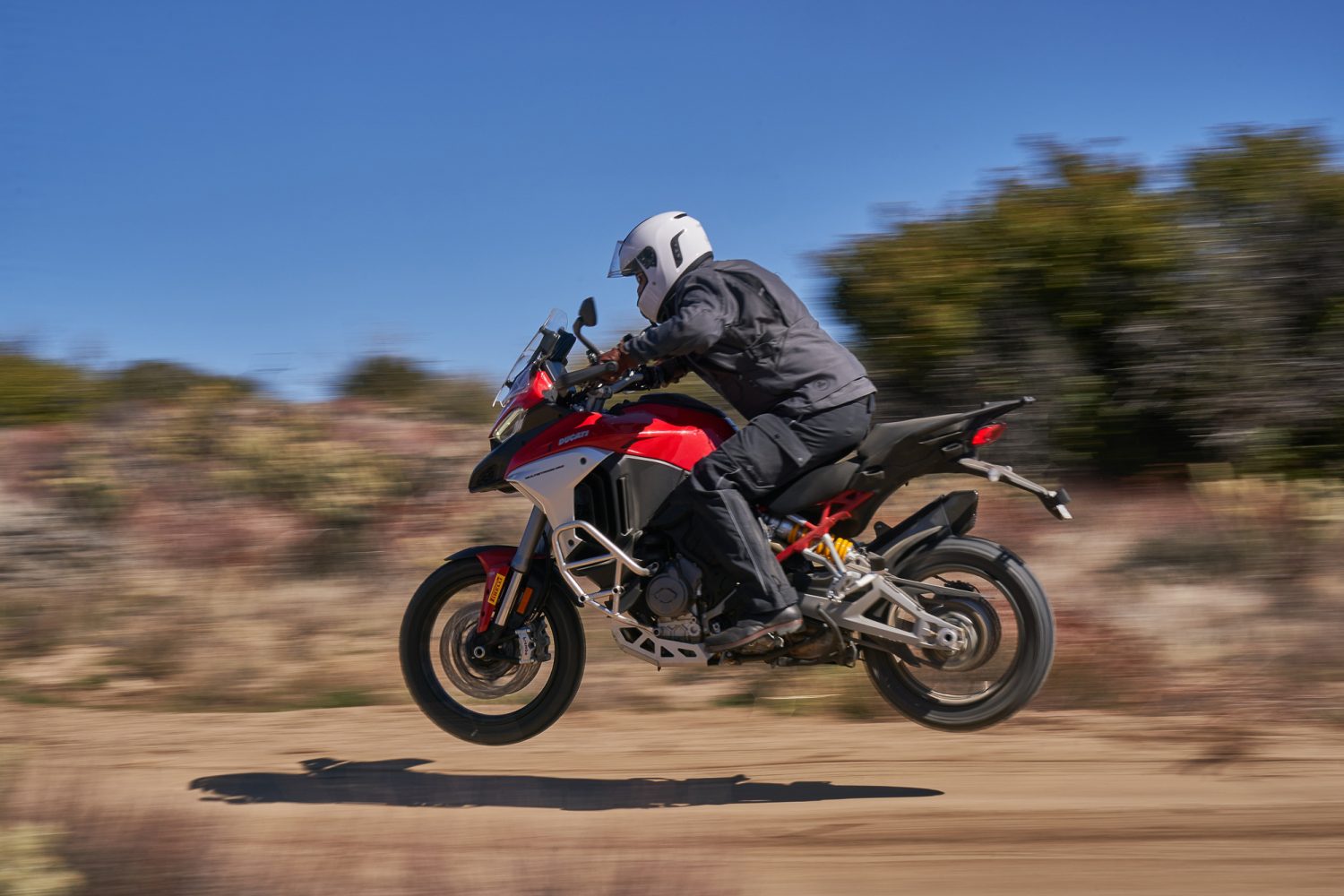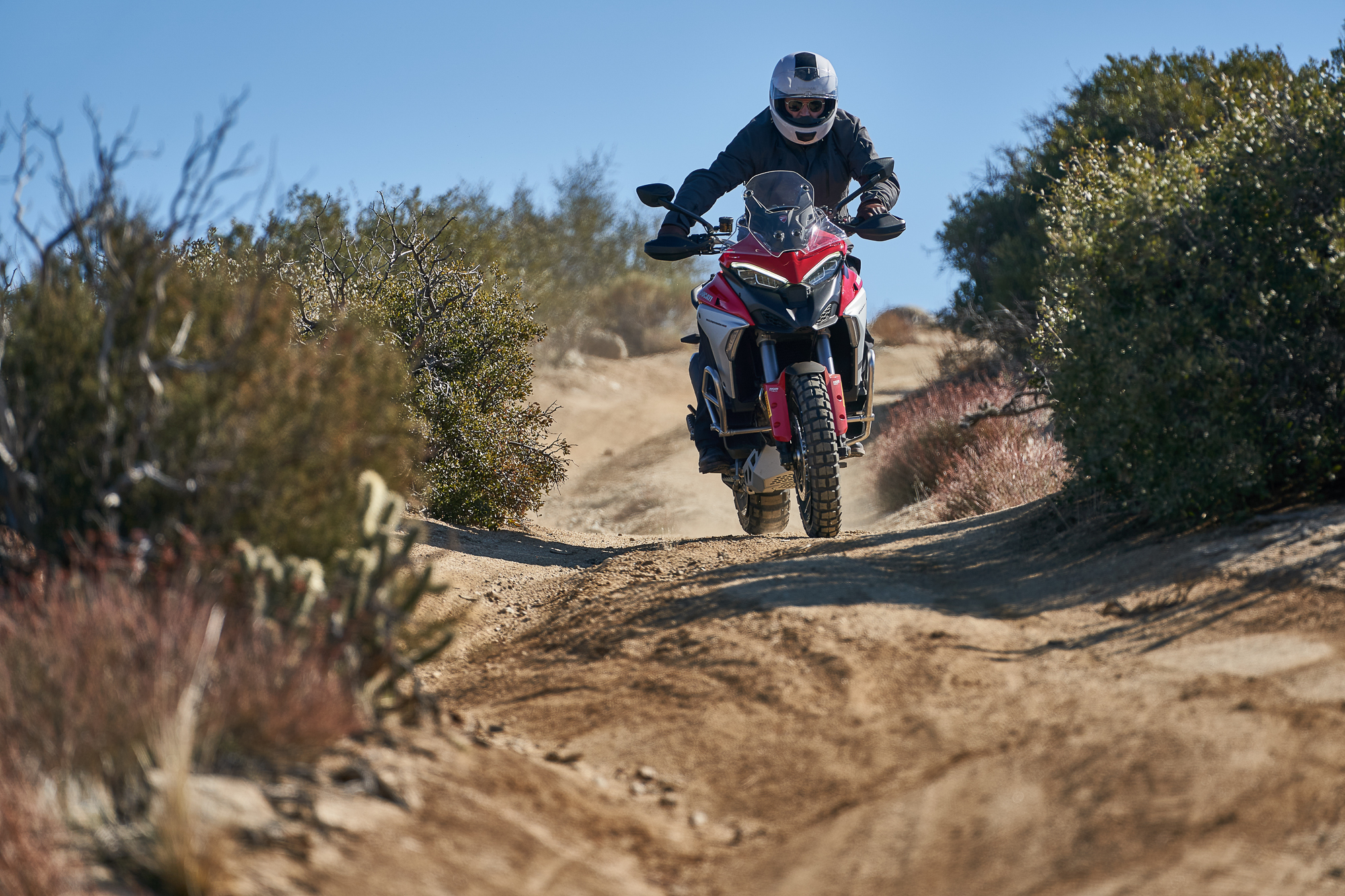Editor’s note: This article was originally published in Overland Journal’s Summer 2021 Issue.
The large-displacement adventure motorcycle segment is a critical landscape for manufacturers, providing the financial margin and consumer excitement needed to sustain future opportunities in this rapidly changing market. Traditional superbike producers like Ducati have expanded their offerings to include scramblers and adventure models, all benefiting from the brand’s style and performance. The new Ducati Multistrada V4s, featuring their flagship Panigale V4 motor is their best adventure bike yet, and a solid shot across the Bavarian bow.
As a touring motorcycle, the new Multistrada is the most comfortable Ducati I have traveled on, combining the smoothness of the V4 with the upright riding position of an adventure bike. While the performance of the Ducati is to be expected, the touring attributes are worthy of notable praise, starting with the wind protection and windscreen. The windscreen lowers with a gloved hand and easily drops out of the way for off-road clearance. I was impressed with the lack of buffeting and low overall riding noise. Even the motor’s chorus would tame at cruising speeds. And on the subject of cruising, this is the first motorcycle I have tested with front and rear radar, which permits blindspot detection (with warning indicators in the mirrors) and forward-facing-adaptive cruise control. It would be easy to dismiss this feature, but it works perfectly and will even nearly bring the bike to a stop, pacing the vehicle in front. The instrument screen is bright and easy to read, proving to be both intuitive and informative. The heated grips are more than adequate for cold climates, and complement the rider and pillion heated seats.

Off highway, this is the best Multistrada we have evaluated, combining a low weight of 480 pounds (when compared with most competitors), excellent Pirelli Scorpion Rally tires, and impressive damping characteristics. The first benefit I noted was the performance in sand, combining the flotation of the wide Pirellis with the low bike weight and good front/rear balance—it rode in the sand like an 800. On technical climbs, the limited suspension travel was notable, and the traction control was all but unusable. Intervention was too high, even on the lowest settings, which cut the throttle or slowed the rear tire to the point that a failed hill climb was a real possibility. I solved the problem by just disabling TC, but it should be an easy fix for the engineers.
On the contrary, their dirt-tuned ABS was excellent and turned off the rear brakes completely. For larger events, the suspension tuning was impressive, even landing significant jumps on the trail. My only real concern in the dirt is the complete lack of a bash plate to protect that glorious motor.
Pros
Shocking road performance
Improved dirt performance
36,000-mile valve train service interval
Cons
Traction control too invasive at lowest settings
No bash plate
Foot controls tight for larger boots
Our No Compromise Clause: We carefully screen all contributors to make sure they are independent and impartial. We never have and never will accept advertorial, and we do not allow advertising to influence our product or destination reviews.


